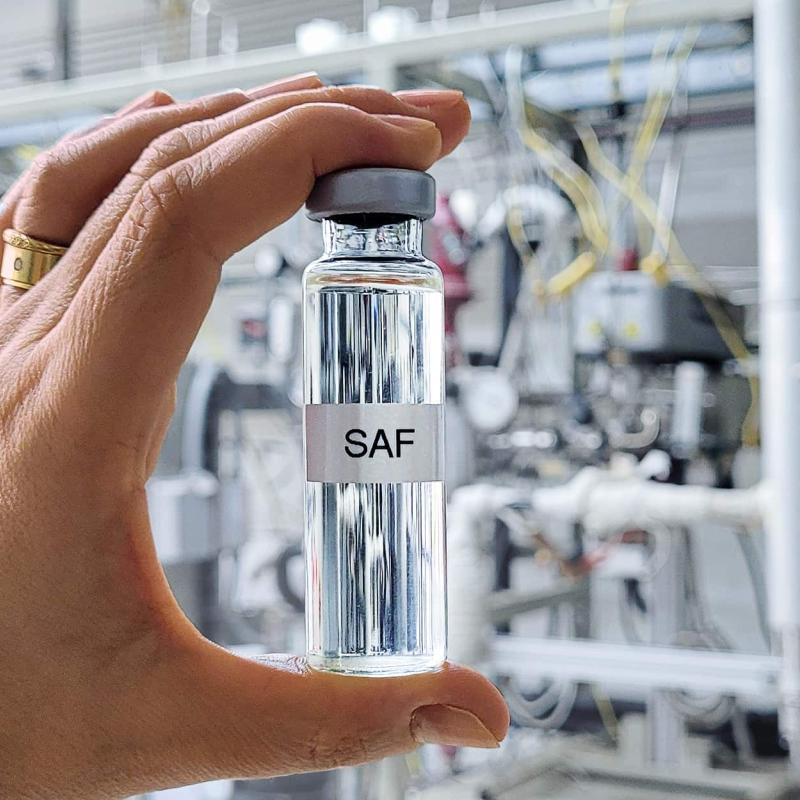No hydrogen, no energy transition
Green hydrogen may not be the answer to every problem, but it is an essential building block for the energy transition. Jörg Baur explains why and outlines GIZ’s role in the development of a global hydrogen economy.
In all the years that GIZ has been working on the topic of hydrogen (H2), one thing has become clear: you can neither produce hydrogen cheaply everywhere, nor use it everywhere. But for core parts of the energy transition, hydrogen is simply the only option. Our interventions at GIZ focus on the places where conditions are favourable and hydrogen brings genuine added value.
The context is clear: we have to decarbonise and reduce CO2 emissions drastically in all sectors. The International Energy Agency (IEA) estimates that around 80 per cent of emissions reductions can be achieved with five technologies: wind, solar, batteries, heat pumps and electric vehicles. Achieving the remaining 20 per cent – a vast amount of energy in global terms – will scarcely be possible without hydrogen and the hydrogen-based fuels known as derivatives.

Jörg Baur is a senior planning officer and energy expert at GIZ.
Using hydrogen where electrification reaches its limits
There are five major ‘problem areas’ for which hydrogen is the most promising solution. First, steel and iron production, in which iron ore is reduced to iron with the help of a chemical reaction with hydrogen. Second, ammonia, which is needed primarily for fertiliser and produced mainly with fossil fuels to date. Third, transport by air – for the foreseeable future, lightweight, powerful batteries for long-haul air traffic will remain unavailable, so synthetic kerosene made from hydrogen is crucial here. Fourth, international shipping – here, too, there is no alternative to hydrogen derivatives in sight. And the fifth application is energy storage to cover the ‘dark doldrums’, periods without sunshine or wind – something that occurs regularly in Germany. These are the ‘big five’ hydrogen applications for wherever electrification reaches its limits, either because processes need physical hydrogen or because batteries and grid-linked electricity are not practicable.
However, hydrogen has its own challenges. The hope that the price of hydrogen would fall over time, as happened with photovoltaic technology, has not fully materialised. A gigantic expansion of H2 production plants is needed if large-scale cost reductions are to be achieved. That requires investments that will probably amount to almost a trillion. What is more, it is not that easy to ship pure hydrogen around the world, because it needs to be liquefied first. Doing this is extremely demanding, as it needs to be cooled to around minus 250 degrees. That is the reason why ammonia has become established as the most practicable chemical transport medium.
Finding the right locations
Nevertheless, in future an estimated 10 to 20 per cent of end-use energy will be accounted for by hydrogen and its derivatives. To meet this demand, it will be crucial to choose the smartest locations – namely, countries with excellent renewable energy resources, a reliable political environment and an industrial basis.
This is precisely where GIZ sees its role. Early on, we took a broad-brush approach, but now we are focussing on locations with optimum conditions, such Brazil, Chile, South Africa, Namibia, Morocco and India.
GIZ is the intermediary between the private sector and the state. We try to build a win-win situation for all parties. For example, in Brazil we are linking up German companies with Brazilian partners and organising conferences to facilitate interaction between companies, research institutes and policy-makers. In Namibia, we are advising the government on utilising its hydrogen potential as profitably as possible.
We also commission analyses of environmental and social risks and develop appropriate standards as the new industries expand – in countries where such structures have barely existed so far. One example of this is the advice we are providing in Mauritania on achieving the best possible gains for the country, despite enormous investor interests – gains such as tax revenue, jobs, expertise and environmental standards. Ultimately, Germany and its hydrogen sector also profit from cooperation like this, as it cannot meet its national needs alone.
More acceptance for the energy transition
At the same time, our work creates greater acceptance for the expansion of renewable energy. In some countries, renewable energy still provokes controversy. The prevailing feeling there is: on top of everything else, the western industrial nations now want us to invest in renewables. However, discussions about green hydrogen provide an opportunity to highlight the huge drop in costs for electricity from renewable energy, which is of course the basis for hydrogen production. So our advice on the topic of hydrogen can have the additional benefit of creating new momentum for the energy transition in our partner countries.
GIZ’s work in the hydrogen sector is an important building block in the construction of a broad-based global hydrogen economy. We contribute know-how, standards, networking and partnerships. In this way, we are establishing the conditions needed for hydrogen to be utilised where it is really needed – as a key contribution to the ‘last 20 per cent’ of decarbonisation.


